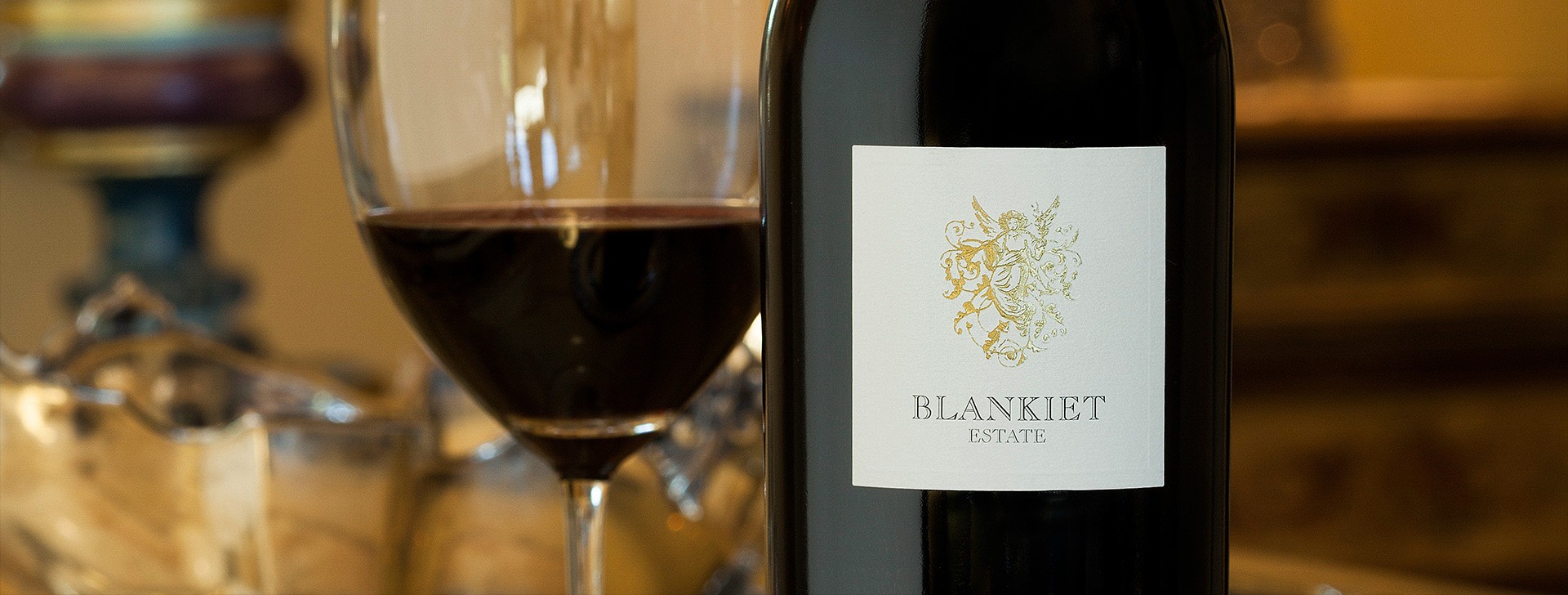

Our Bordeaux Medoc blend of predominantly Cabernet Sauvignon with Merlot, Cabernet Franc and Petit Verdot. This wine is sheer power in a silk glove.
Review
-
Wine Advocate
Review by Joe Czerwinski
Rating: (96)
VIEWDrink 2025 – 2040
Blankiet’s main bottling is the 2022 Proprietary Red Paradise Hills Vineyard, a blend of 77.9% Cabernet Sauvignon, 11.8% Merlot, 5.4% Petit Verdot and 4.9% Cabernet Franc. Crushed stone, pencil shavings and cinnamon accent, black olives, and ripe cherries on the nose, while the medium to full- bodied palate is supple and creamy in feel, lush and long with great length and focus on the finish.
Owner Claude Blankiet presaged our tasting of the 2022 by saying, “Heat is always the enemy of wine. We experienced this 20 years ago, trying to dry farm our vineyard and during a heat spike in September, our grapes shriveled in three days. We started experimenting with shade cloth in 2004 and now we have 75,000 linear feet protecting the fruiting zone, in addition we use tiny water misters that lowers the temperature by 10 degrees around the clusters. We used both systems in 2022 – It saved us.” While neighboring Dominus is not bottling any 2022s, said Blankiet. “For us, our wines kept their freshness. Using the shade cloth as louvers – lowering and raising them – we were able to mitigate the excess of solar radiation without slowing ripening.” “Blankiet said that some people opted to harvest early – the end of August or early September. “But here, when we tasted, the fruit wasn’t ripe,” he said, “so we waited.”
Winemaking consultant Graeme MacDonald, who began working with Blankiet in 2016, does a reasonably large saignée –about 20% — which goes toward the estate rosé, but he isn’t dogmatic about avoiding water additions. “The goal is always to pick perfectly, he said. “I don’t like acid adjustments because I think you can taste them later.” He also limits yeast nutrient additions to induce reduction. “If you get the picking decision right, you can avoid many of the adjustments,” he said. “I like being hands-off. I want to be the invisible winemaker if I can.” That said, MacDonald isn’t shy about discussing what he does do. “Since I have been here, the goal has been to bring out more tannin and structure. We do big saignées and 40 to 50 days macerations.”
The fruit is chilled to 24° F. to help with destemming, and there is a long cold soak (seven days or more), at the end of which he adds a ‘pied de cuve’ (native wild yeasts starter). A warm initial fermentation stage (above 90 degrees Fahrenheit), which he then backs off as alcohol levels rise, followed by an extended maceration under closed lids without further pump-overs (with temperatures as low as 65 to 70 degrees Fahrenheit).
“There is bitter chocolate that starts to come out, and that’s when you know you are done,” said MacDonald. “I like reduction because that’s how you get the graphite, the minerality to come out.”
During aging, he will do barrel swaps to avoid “over-seasoning”. Any particular lot, is racked as needed and he slowly build the blends over the entire course of the élevage. By his own admission, he often has last-minute changes, like adding another gallon of Petit Verdot into the blending tank.
“Wine is man and technique, science and nature” said Blankiet. “That’s the magic of wine.”
Published: Oct 17, 2024
-
International Wine Report
Review by Joe D’Angelo
Rating: (99)
VIEWThe 2022 Blankiet Estate ‘Proprietary Red’ comprises 77.9% Cabernet Sauvignon, 11.8% Merlot, 4.9% Cabernet Franc and 5.4% Petit Verdot. It is a stunning embodiment of class and sophistication, enticing the senses with an expressive bouquet of ripe blackberries, dark cherries, and luscious black currants. The aroma is beautifully complemented by delicate floral notes, adding elegance to the wine’s profile. As it unfolds, hints of graphite, spices, and a touch of black olives introduce a refined complexity that enhances its overall character. On the palate, the wine showcases a remarkable purity of fruit, seamlessly balanced with a polished structure that underscores its sophistication. Each sip reveals a harmonious blend of flavors, culminating in a long, graceful finish that reflects the craftsmanship of Blankiet. This is a total beauty that will certainly age gracefully and offer years of drinking pleasure ahead.’
Drink 2025 – 2050


